How to Identify the Stars & Use Star Maps for Stargazing
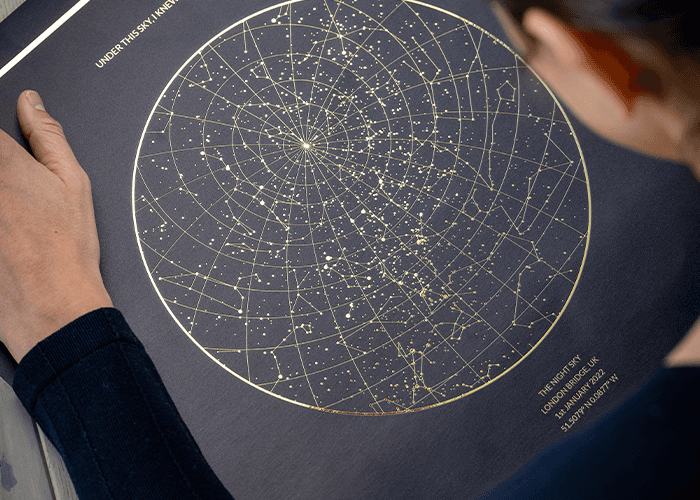
The stars offer a glimpse into the vast universe beyond our Earth. Stargazing is not only a mesmerizing experience but also a journey through time and space, where each star and constellation has its own story to tell.
Whether you're a budding astronomer or simply someone who marvels at the beauty of the cosmos, learning how to identify the stars above can produce feelings of awe and wonder. They can offer inspiration for creativity and guide us to lead our very best lives.
In this article, we explore the secrets of the stars. How can you identify stars? What should you know? Can you use a stargazing map to help? We’ll answer all these questions and more, including where to stargaze and when to stargaze. So, let's set out on this starlit journey and unlock the mysteries that shine brightly above us almost every night.
How Are Stars Identified?
Curious about how to identify stars? The truth is that identifying stars in the vast expanse of the night sky is both an art and a science, a process steeped in history and enhanced by modern technology. Ultimately, star identification involves recognizing patterns and understanding the characteristics that make each star unique.
Historically, stars have been identified using a system of constellations, which are patterns of stars that form recognizable shapes in the sky. These constellations, often based on mythological figures, animals, or objects, have been used for millennia to navigate and tell stories.
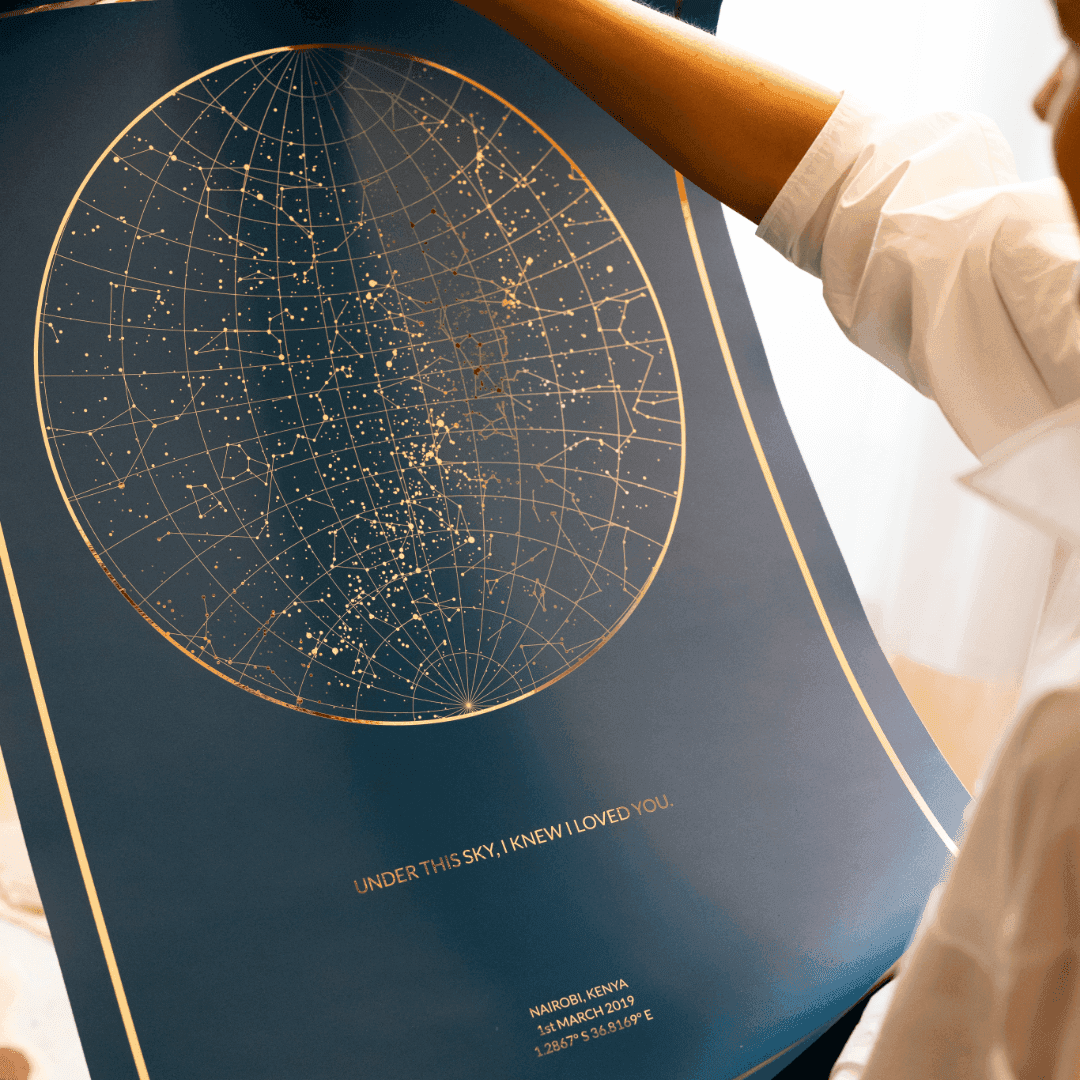
In the modern era, with gadgets and technology, astronomers have developed a more systematic approach. Stars are cataloged using precise coordinates, much like a cosmic GPS system. These coordinates are based on the star's position in the sky and its celestial latitude and longitude, known as right ascension and declination. This system allows astronomers to pinpoint a star's location at any given time.
Stars can also be classified and identified by their characteristics, such as luminosity, color, temperature, size, and composition. The most commonly used system for this is the Hertzsprung-Russell diagram, which categorizes stars based on their brightness and temperature.
However, for the sake of this article, let’s focus on how to identify stars and constellations using a simple star map and other techniques. The truth is you don’t have to be an expert astronomer to look into the wonders of the night sky!
How Can I Identify Stars?
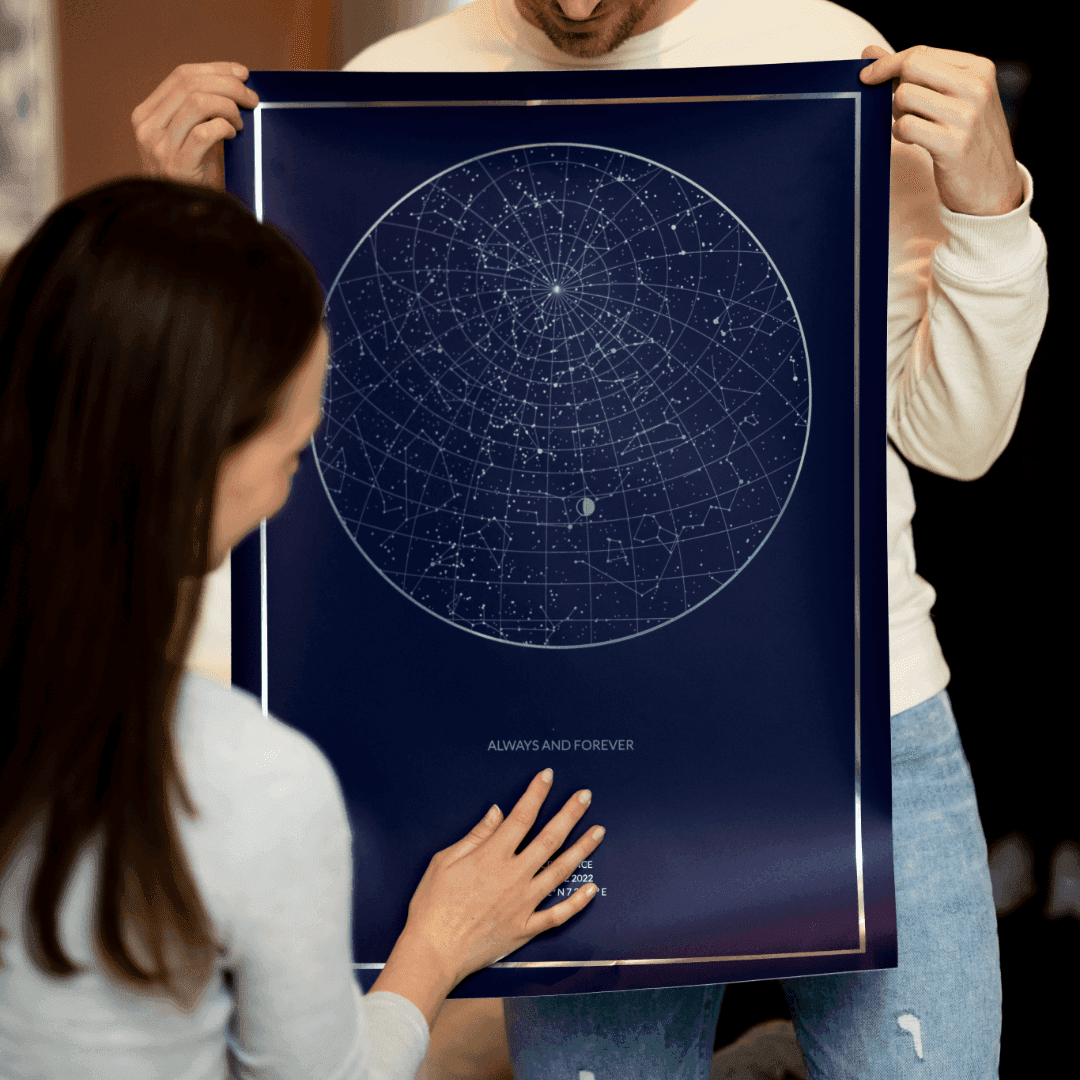
It’s time to find the stars that speak to you and uncover the wonders of the universe. Here’s how to do that.
1. Use an Accurate Star Map
Star maps, also known as star charts, are detailed maps of the night sky, depicting constellations, stars, planets, and other celestial objects as seen from Earth. They are your celestial guide, helping you navigate the sky's expanse and identify stars in the sky.
To get started, select a star map that aligns with your geographic location and the current time of year; the night sky changes with seasons and geographical positions. Modern star maps come in various formats, from traditional paper charts to digital apps that use augmented reality to overlay star information onto the live sky view. Whether you're using a printed atlas or a smartphone app, ensure your star map is up-to-date and accurate, as it will be your primary tool in unraveling the celestial tapestry above.
2. Understand the Features of a Star Map
A typical star map is a comprehensive and accurate representation of the celestial sphere, complete with various symbols and markings that denote different astronomical objects.
Key features of a star map include the depiction of constellations, often outlined or filled with imaginative illustrations, and the marking of individual stars, usually with varying sizes indicating their brightness.
Look for grid lines representing celestial coordinates: right ascension (akin to longitude) and declination (similar to latitude). Familiarizing yourself with these features will enhance your ability to navigate the map and translate its two-dimensional representation into the three-dimensional tapestry of the night sky.
3. Observe Bright Stars
One of the most intuitive ways to begin stargazing is by observing bright stars easily visible to the naked eye.
A question that might come to mind is, “How do I know if I’m looking at a star or a satellite?” The easiest way to determine this is by starting with prominent constellations like Orion, easily identifiable by its distinctive belt of three stars in a row, or the Big Dipper, part of the larger Ursa Major constellation known for its distinctive saucepan shape. These constellations contain some of the brightest stars, such as Betelgeuse in Orion and Alkaid in the Big Dipper, which act as excellent guides for beginners.
4. Learn Constellations
Constellations are like the chapters of a celestial storybook, each with its unique pattern and mythology. To identify a constellation, begin by focusing on the major constellations, such as Ursa Major, Cassiopeia, or Scorpius, which are relatively easy to spot and remember. Utilize reference materials like star atlases, apps, or online resources, which provide detailed information on constellation locations, shapes, and the best times of year to view them.
Many of these resources also offer fascinating insights into the historical and cultural significance of constellations, adding depth to your stargazing experience and aiding in star identification. Practice recognizing these patterns in the night sky, and gradually, you'll build a mental map of their positions, making it easier to locate other stars and celestial phenomena.
5. Understand Coordinates
To find stars with coordinates, you’ll need to become familiar with two key elements: right ascension (RA) and declination (Dec). RA is analogous to longitude, measuring east-west positions, and is often expressed in hours, minutes, and seconds. Dec, similar to latitude, measures north-south positions in degrees.
These coordinates are referenced against the celestial equator and the vernal equinox, providing a standardized grid system for the sky. In fact, by finding stars by their coordinates is probably the most well-known way to locate different stars or constellations, even on nights when visibility might be on the low side.
6. Spot Planets
Planets like Venus, Jupiter, and Mars often outshine the stars due to their closer proximity to Earth and reflective surfaces. This means it can help to identify stars and planets together, such as finding a planet nearby and going from there.
So, what should you know about identifying planets and stars in the night sky? Here are a few basics: Planets are distinguished from stars by their steady, non-twinkling light and their unique movement across the sky. Planets follow a path along the ecliptic, the Sun's apparent path across the sky, making them easier to identify.
For instance, Venus, known as the “Evening Star” or “Morning Star,” often appears near the horizon just after sunset or before sunrise. Jupiter, the largest planet in our solar system, shines brightly and can be identified by its sheer luminosity. With its distinctive red hue, Mars stands out amongst the starry backdrop.
What is the Easiest Star to Identify?

Polaris, also known as the North Star, is one of the easiest stars to identify in the night sky. Situated almost directly above the Earth's northern celestial pole, Polaris holds a nearly fixed position in the sky, making it a unique and constant stellar marker. Its steadfast location means it can be found in the same spot every night, providing a reliable guide for navigation.
To locate Polaris, find the Big Dipper constellation (part of Ursa Major) and follow the line created by the outer edge of its bowl upwards; Polaris is the bright star at the end of this line, anchoring the tail of the Little Dipper (Ursa Minor).
How Do I Know if I'm Looking at a Star or a Satellite?

As stated above, it can be easier to identify stars when finding them as part of a constellation or near a planet.
If this isn’t possible, there are other ways to determine the differences between stars and satellites. For instance, stars are characterized by their steady, twinkling light and fixed position. In contrast, satellites appear as small, moving points of light that travel across the sky, typically moving from west to east. Unlike stars, satellites do not twinkle and often move at a consistent speed.
Stargazing from The Location of Your Special Moment
Revisiting the location of a special moment under the night sky can be a profoundly nostalgic and beautiful experience. When you bring your star map to a cherished spot of your choosing, you can uniquely compare the celestial canvas of the past and the present.
The night sky is a dynamic tableau, with stars and planets shifting positions over time due to Earth's rotation and orbit. This means the constellations and celestial bodies you saw during that memorable event may be in different places now. Observing these changes can deepen your connection with the cosmos, offering a tangible sense of the passage of time and the evolving nature of the universe. It's a reminder that while the sky may look different, the special memories associated with that place remain constant, bridging the past and present in a starlit embrace.
Stargazing Tips for Night Sky Beginners
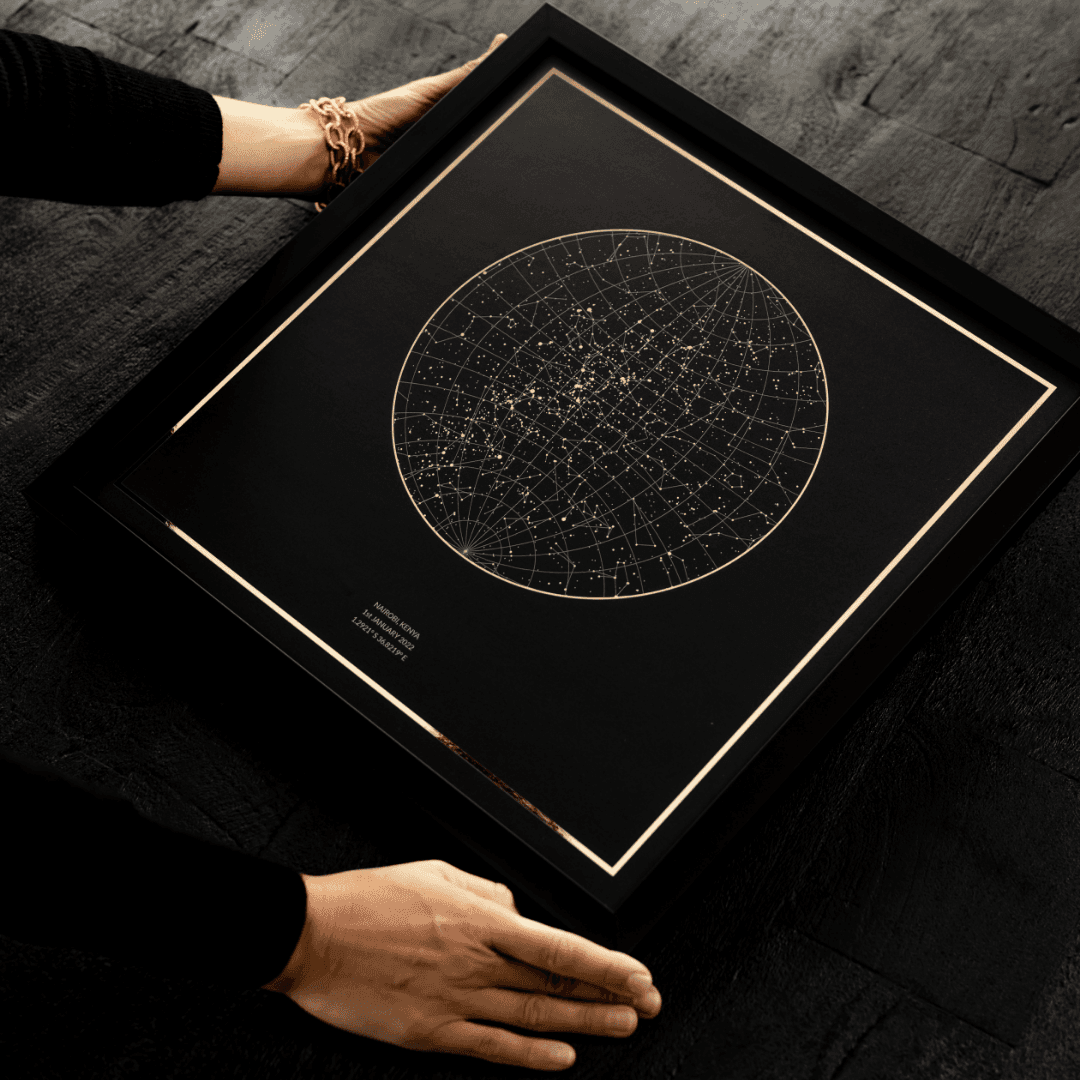
So, you’re new to stargazing. What else should you know?
Learn the Night Sky from Your Location
Gaining familiarity with the major constellations and prominent stars visible from your location during the current season is a key step in mastering stargazing. This localized knowledge allows you to navigate the night sky more effectively as you learn to recognize the unique celestial patterns that appear above you throughout the year.
Be Mindful of Moon Phases
When planning your stargazing sessions, it's essential to consider the phase of the Moon; its brightness can significantly affect your night sky observations. During a full moon, the intense lunar light can wash out fainter stars and celestial objects, making them harder to see.
So, when are stars most visible? The best time to stargaze is during a new moon or when the moon is in a thin crescent phase, on a clear night, in an area with low pollution, and, if possible, at a higher altitude.
Allow Your Eyes to Adjust
To fully appreciate the night sky, allow your eyes at least 20 minutes to adjust to the darkness. This adaptation enhances your night vision, significantly improving your ability to discern fainter stars and subtle celestial objects that are otherwise invisible in initial glances.
Be Patient
Stargazing is a practice of patience and tranquility, inviting you to embrace the vastness and majesty of the universe. Allow yourself to relax, take your time, and deeply appreciate the cosmic spectacle unfolding above you.
Identify the Stars on a Night Most Significant to You
Identifying the stars on a night that holds special significance for you is a deeply personal and rewarding journey. Choose a special date, time and location, and gaze up at the sky above you. How have the stars moved? What constellations can you see? This wondrous celestial exploration connects you with the universe on a meaningful date, enriching your experience with a blend of astronomical wonder and sentimental value.
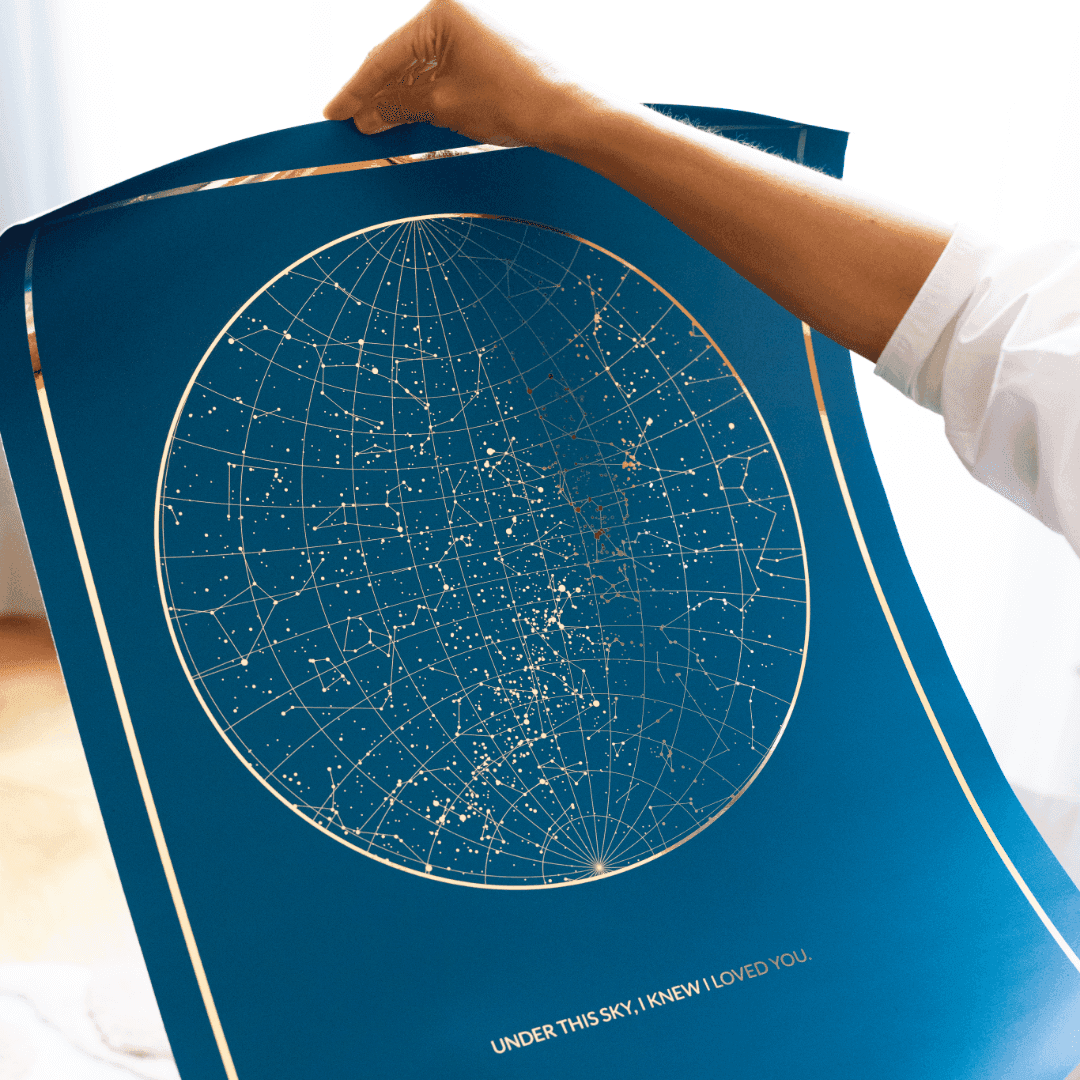
Whether it's a significant anniversary, a historical event, or a personal milestone, aligning your stargazing with these moments creates a lasting memory, bridging the vast cosmos with the intimate landmarks of your life.
Join us in your exploration of life’s precious moments and create your Night Sky today!






